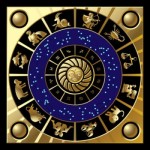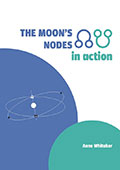Were I allowed three books on my Desert Island, next to Carpentry for Dummies would nestle two astrology books. One, Michelsen’s 21st Century Ephemeris, the other, Michelsen’s Tables of Planetary Phenomena.
My fascination with planetary cycles began in the early 1980s – during a lecture by the late Charles Harvey. Until that time Mundane astrology was unknown to me. I was still grappling to develop fluency with the absolute basics.
The idea that energy tides running through the cosmos could be mapped and explicated simultaneously both in terms of individuals’ lives and wider socio- political processes gripped me immediately. Long before studying astrology I had spent far too much time wondering about, and reading around ‘What are we tiny specks of sentient matter doing here amidst the Vastness?’ : a question most sensible folk prefer to ignore if possible.
After discovering Mundane, I kept an eye on what was going on in the world with an Ephemeris in one hand – Michelsen’s, of course!
Having begun teaching astrology classes in the mid 1980s, I attempted to infect even my most solipsistic students with enthusiasm for Mundane. One approach was to collect press cuttings and pictures on those special occasions of planetary ingresses into new signs.
Saturn’s entry into Pisces in May 1993 yielded a stunning front page image of a cargo ship grounded on a sandbank in the English Channel. The day Pluto went into Sagittarius in January 1995 saw the Japanese city of Kobe go up in flames, struck by a huge earthquake. That same week, a photo appeared of Pope John Paul the Second preaching to over a million people in Manila.
By the late 1990s I had built up an extensive file. Unfortunately it is now somewhere in Belgrade (…another story…!)
However, the best was yet to come. In 1996 I became obsessed with the Jupiter/Uranus conjunction in Aquarius due on 16th February 1997. Jupiter and Uranus meet every fourteen years. When they do, revolution and innovation join forces with restless exploration and the quest for knowledge.The result is always exciting, educational and unpredictable. Or is it?
I set about testing astrological theory against events in individual and collective life, ending up writing a whole book, eventually published in 2009. The big event of the 1997 conjunction was, of course, the announcement to the world of Dolly, the first cloned sheep.
I collected volunteers whose horoscopes would be ‘zapped’ by that conjunction, setting the research into their personal lives during 1997-8 in the context of world affairs. I then had the bright – and slightly mad – idea of following the pulse beat of this conjunction throughout chunks of history.
My time periods were 500 BC-0 AD; 0-500 AD; 500-1000 AD; 1000-1500 AD; 1500-2000 AD; then 2000-2050. Those arbitrary ‘chunks’ roughly followed the pattern of the mighty 500 year Neptune/Pluto conjunctions, whose last two meetings took place in Gemini in 1398/9 and 1891/2.
None of this research would have been possible, of course, without Michelsen’s Tables of Planetary Phenomena.

Using this brilliant reference book, I was able to construct tables of the Jupiter/Uranus conjunction’s travels: through the four elements of fire, air, earth, and water from 500 BC to 2000 AD, through an overview of its journey via the four elements by century 1700-2100. With specific reference purely to Jupiter/Uranus conjunctions in Aquarius, I plotted their movements from 500 BC right through to 2500 AD, focusing more narrowly on their progress through the four elements during the 20th Century.
This research, validating astrological theory, gave me a tremendous ‘buzz’, since it provided startling perspectives on human technological development during very long periods.
For example, there are two time blocks with more Jupiter/Uranus conjunctions in Aquarius than any other. One is during 0-500 AD, roughly coinciding with the rise, dominance and fall of the Roman Empire from the first Emperor, Augustus. The other is 1500-2000 AD, the beginning of the Renaissance and the great European voyages of discovery: the most rapid period of technological advance the human race has ever known.
Thank you, Neil F.Michelsen!
__________
Endnotes:
This post was first published as my first Not the Astrology Column in the July/August 2014 Issue of the UK’s Astrological Journal, edited by Victor Olliver, under the title “For love of Mundane astrology…and in praise of Neil F.Michelsen…”
My two research studies “Jupiter Meets Uranus”(second edition) and “The Moon’s Nodes in Action” can be downloaded as free e-books from this site.
Zodiac
********
700 words copyright Anne Whitaker 2017
Licensed under Creative Commons – for conditions see Home Page






















































I am intrigued. Wondering if I should add these to my learning library. 😊
LikeLike
Yes, definitely, Carrie, if you have any interest at all in the shifting energy patterns of the bigger picture, and where we might fit into that. They are a great investment !
LikeLiked by 1 person
Reblogged this on Lost Dudeist Astrology.
LikeLike
Thanks, GT!
LikeLiked by 1 person
You are welcome!
LikeLike
Reblogged this on Still Another Writer's Blog.
LikeLike
You are too kind, GT!
LikeLiked by 1 person
Out and about so can’t correct at present… should have been ‘kind’…
LikeLike
Via Facebook:
9.4.17:
Jan Martin;
1997 was such a pivotal (and calamitous) year for me that I must read your book
LikeLike
Please do, Jan – and report back if you feel like it. The second edition ebook also has my research and many articles on the NEXT Jupiter/Uranus conjunction in Aries/Pisces of 2010/11. `I hope 2010/11 was less tough for you…
LikeLike
Via Facebook:
9.4.17:
Mads Elung-Jensen:
Stephen Arroyo’s Astrology, Karma and Transformation and Liz Greene’s The Astrology of Fate. My first loves.
LikeLike
What great taste you have, Mads! As a matter of fact, those two are in my top five of all time favourites ⚡
LikeLike
Via Facebook:
9.4.17:
Morgana Dee:
Ephemeris and book of tables, no question.
LikeLike
My kind of castaway, Morgana! Let’s sit under the same palm tree and compare notes…
LikeLike
Morgana Dee: Love it. Without the way to read or set up a chart or know where the planets are traveling what use any interpretation book then?
LikeLike
Via Facebook:
9.4.17:
Madeline Hill Kasian:
I love Betty Lundsted’s books but then there is Steven Forrest and Arroyo.. too many good ones to choose!!
LikeLike
Agreed, Madeline! Maybe I should have expanded the list…
LikeLike
Via Facebook:
9.4.17:
Sandra Dziedziula:
Evangeline Adams, Alfred Seward 1915, star signs/Linda Goodman
LikeLike
Thanks, Sandra! Must now look up Alfred Seward 1915…
LikeLike
There are many more interesting comments, with favourite desert island astrology book suggestions, to be found on this blog’s Facebook Page. Just scroll down to this post, shared there, if you’d like to read them:
https://www.facebook.com/Astrology-Questions-and-Answers-381046495339417/?hc_ref=PAGES_TIMELINE&fref=nf
LikeLike